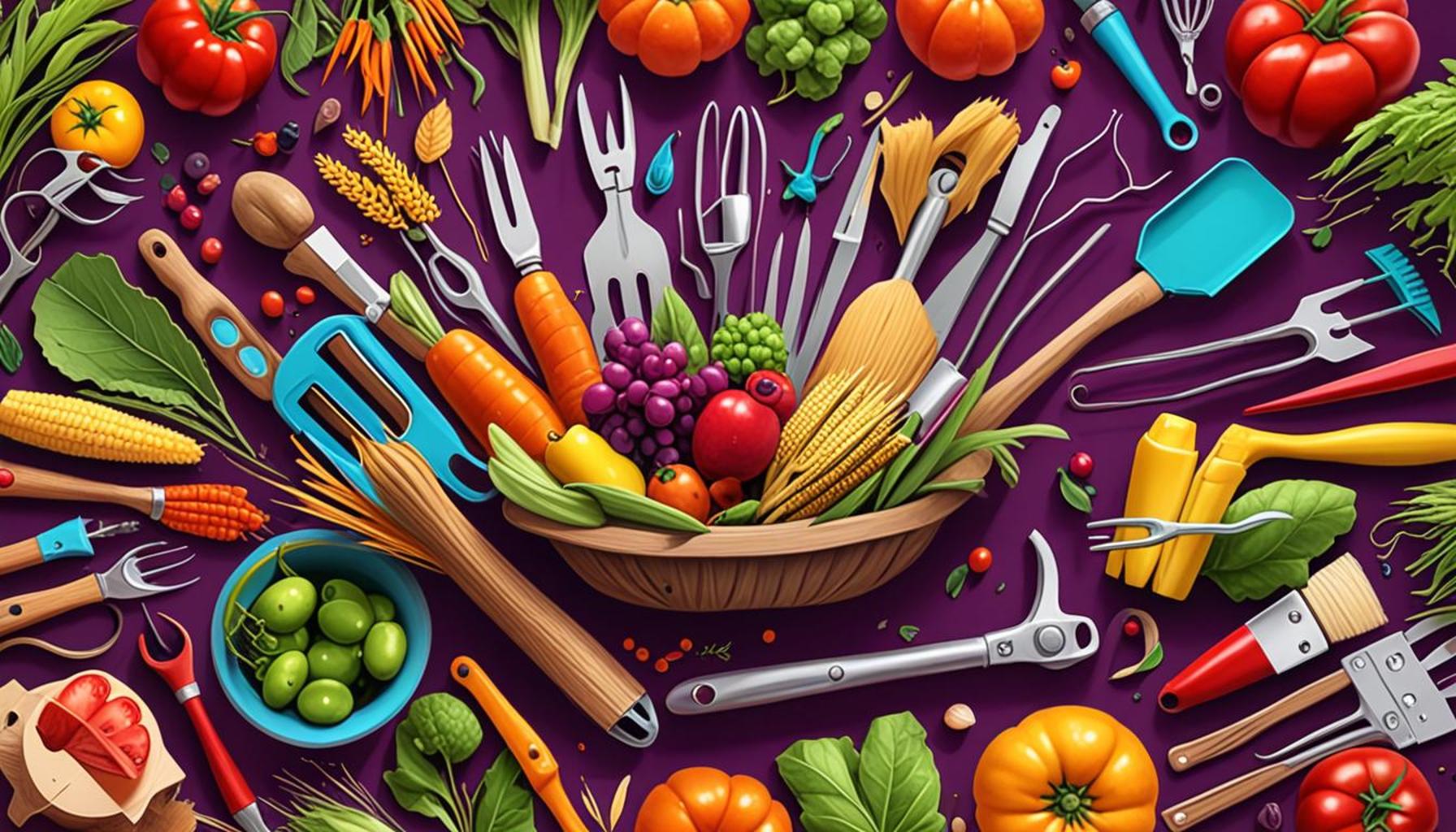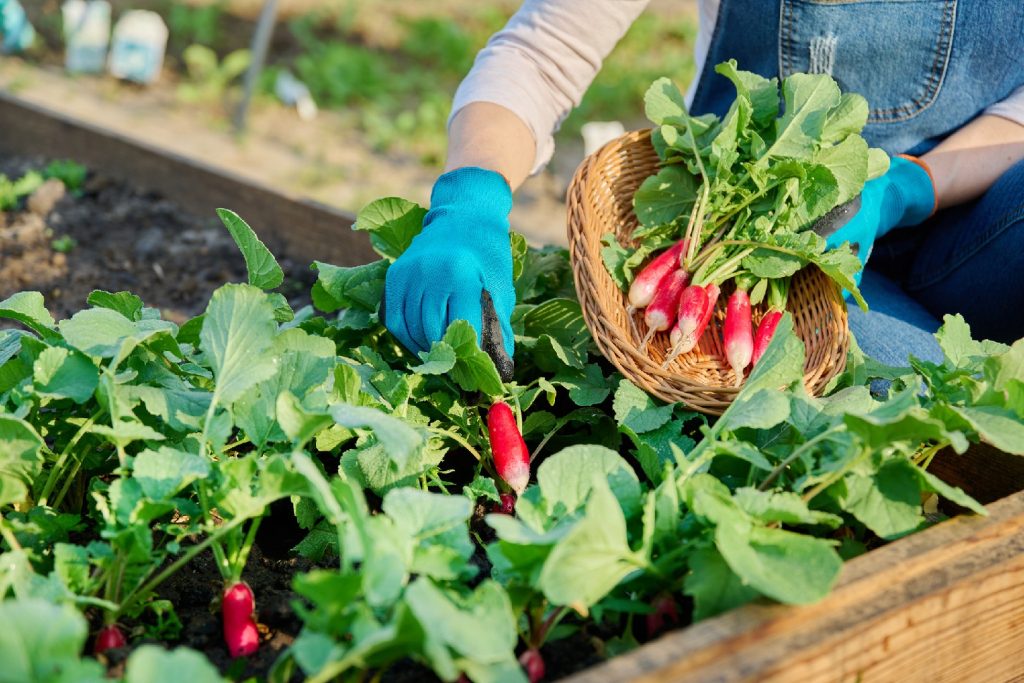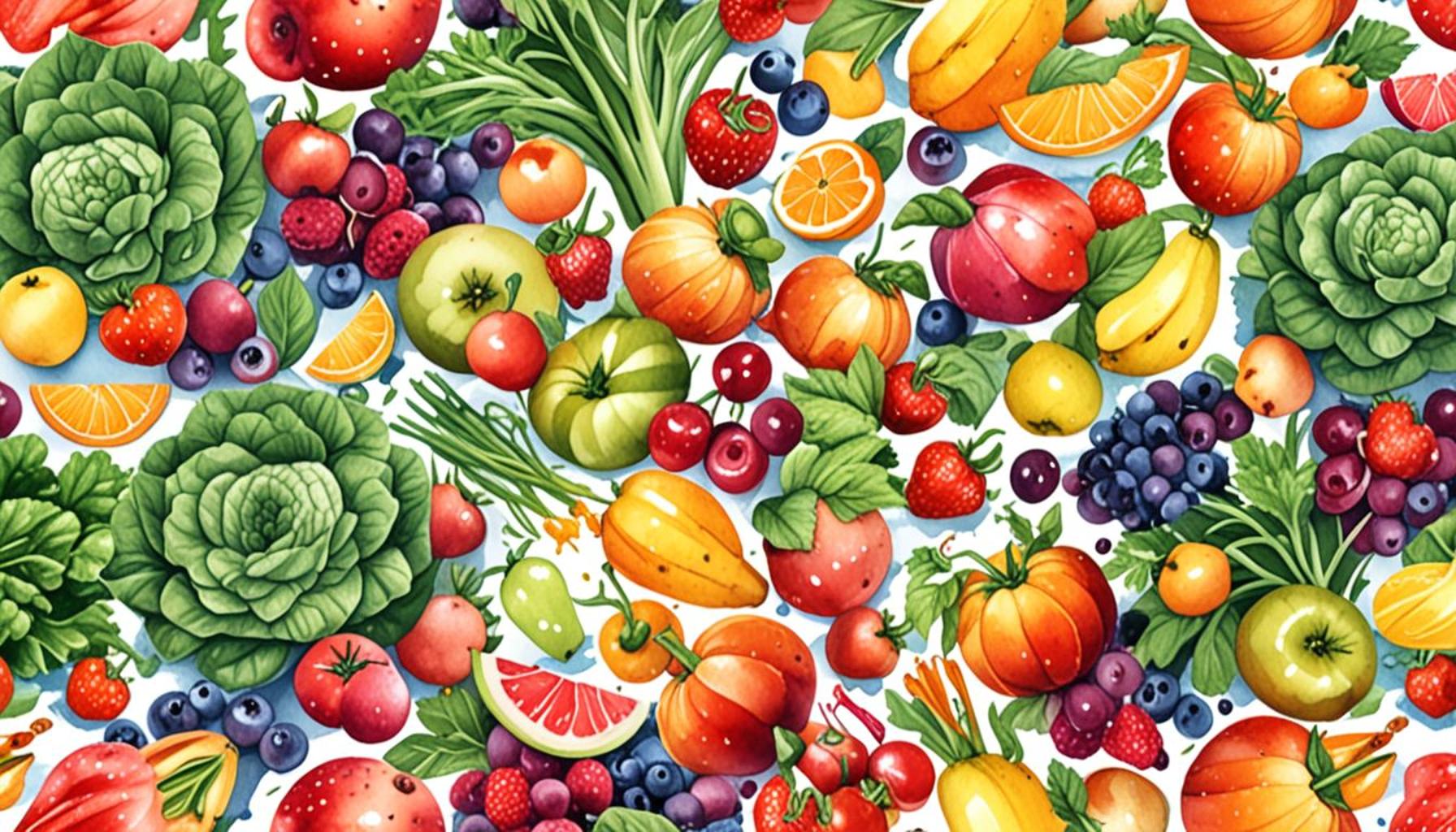Harvesting Techniques: Tools and Methods to Facilitate the Harvesting Process at Home

Understanding Harvesting Techniques for Optimal Garden Yield
As the seasons transition and the abundance of home gardens reaches its peak, mastering the art of harvesting techniques emerges as a crucial skill for every avid gardener. Whether your passion lies in cultivating vibrant vegetables, succulent fruits, or fragrant herbs, utilizing appropriate methods and tools can substantially enhance your yield and simplify the entire harvesting process.
Importance of Harvesting
Harvesting is far more than simply picking produce from the garden; it encompasses a variety of critical techniques that directly influence the quality, flavor, and overall nutrition of your garden bounty. Picking crops too early or too late can lead to tasteless tomatoes or overripe squash. For instance, tomatoes are best harvested when they exhibit a deep, rich color and a slight give when gently squeezed, ensuring peak flavor.
Key Considerations for Effective Harvesting
- Timing: Harvesting at the correct moment plays a pivotal role in achieving peak flavor and nutrition. Different crops have specific developmental markers. For example, zucchinis should be harvested when they are about 6-8 inches long for optimal tenderness, while peppers should be picked when they reach full size and desired color, whether that be green, red, or yellow.
- Tools: Utilizing specific tools tailored for various plants is essential to avoid unnecessary damage during the harvesting process. A pair of sharp garden shears or scissors can help prevent crushing delicate herbs like basil, while a harvesting knife may be ideal for thicker-skinned vegetables like pumpkins.
- Technique: Engaging in proper cutting or pulling methods is crucial in preserving the plant and ensuring continued growth for potential future harvests. For instance, when harvesting lettuce, it’s best to cut the leaves separately rather than uprooting the entire plant to allow it to continue producing.
Tools and Methods to Elevate Your Harvesting Experience
With a wealth of knowledge at your fingertips and the right approach, elevating your gardening success is entirely achievable. From simple hand tools such as trowels and pruners to innovative gadgets like ergonomic harvesters designed to reduce wrist strain, the options available for facilitating the harvesting process at home are both diverse and exciting. For example, using a basket with a cushioned handle can make carrying your harvest more comfortable, while a multi-tool knife can streamline the process of cutting and gathering crops.
Exploring these tools and techniques not only maximizes your yield but also transforms the experience into a rewarding venture. You may even find yourself experimenting with new methods over time, continually improving your gardening skills while enjoying the fruits of your labor to the fullest.
DISCOVER MORE: Click here to learn how beneficial insects can enhance your garden.

Tools Essential for Home Harvesting Success
When diving into the intricate world of harvesting techniques, understanding the variety of tools available can dramatically enhance your efficiency and efficacy. Each plant species requires specific utensils to ensure minimal damage, easy handling, and overall enhanced experience during the harvesting process. Below, we outline some indispensable tools that should be part of every home gardener’s toolkit.
Hand Tools for Precision and Flexibility
Hand tools are often the backbone of successful harvesting. Basic tools not only aid in picking but can also preserve the structural integrity of the plants, allowing for subsequent growth for future harvests. Here are some must-haves:
- Pruners: A trusty pair of hand pruners is essential for cutting more delicate crops like herbs and leafy greens. Look for lightweight models that provide a clean cut without crushing the stem, which minimizes damage and promotes regrowth.
- Harvesting Knife: For tougher vegetables, such as pumpkins or melons, a small harvesting knife with a serrated edge can prove beneficial. It allows you to slice through tougher skins easily while maintaining control.
- Garden Fork: This tool is particularly useful for root vegetables like carrots or potatoes. A garden fork can loosen the soil around the roots, making it easier to pull them out with minimal damage.
- Baskets and Bags: Transporting your harvest requires the right container. Opt for baskets with breathable materials that can protect delicate fruits and vegetables while allowing air circulation. Consider using fabric bags for easy storage and movement around the garden.
Innovative Gadgets to Enhance Your Harvesting Efficiency
In addition to the traditional tools, several innovative gadgets have emerged in the gardening world, designed to make the harvesting process even smoother. These tools can save time and reduce physical strain, allowing you to enjoy the process more fully:
- Ergonomic Harvesters: These gadgets are designed to minimize wrist strain and improve efficiency. They often come equipped with multiple functions, enabling you to cut, scoop, and gather without the need for changing tools frequently.
- Harvesting Gloves: Protective gloves should not be overlooked. Choosing a pair with a good grip can protect your hands while offering functionality when picking thorny plants like blackberries or raspberries.
- Harvesting Trolley: For larger gardens, a harvesting trolley can streamline the process. Equipped with wheels and ample space for your gear, it facilitates easy transportation of your tools and harvests across the garden.
Integrating these essential tools and innovative gadgets into your gardening routine not only simplifies the harvesting process at home but significantly enhances your overall experience. Remember, each tool serves a purpose, so selecting the right ones tailored to your specific crops can offer extraordinary benefits, allowing you to reap the rewards of your hard work efficiently.
Harvesting Techniques: Tools and Methods to Facilitate the Harvesting Process at Home
As the summer sun begins to set and the bounty of the garden reaches its peak, efficiently collecting crops becomes crucial for home gardeners. Understanding various harvesting techniques and utilizing the right tools can significantly enhance the effectiveness of the process. Here, we highlight some valuable methods and tools designed to streamline the harvesting journey, ensuring that each fruit, vegetable, or herb is gathered at its prime.
| Category | Description |
|---|---|
| Hand Tools | Tools like pruning shears and harvest knives allow for precise cuts, reducing damage to crops. |
| Mechanical Aids | Using wheelbarrows and carts can ease the transportation of harvested goods, limiting fatigue. |
| Timing and Technique | Knowing when to harvest (e.g., early morning or late afternoon) ensures the best quality and flavor of produce. |
| Storage Methods | Properly storing harvested produce, such as through refrigeration or canning, prolongs their freshness and usability. |
To delve deeper into the array of tools and methods available for enhancing your home harvesting experience, countless resources and communities exist to provide practical advice and innovative techniques. As you explore these options, you empower yourself and sustain the rewards of your culinary labor, transforming your garden into a thriving supply of fresh produce year-round.
LEARN MORE: Click here to discover how cover crops can enhance soil health
Harvesting Methods to Maximize Your Yield
While having the right tools is crucial for a fruitful harvesting experience, the methods you employ during the process can significantly impact your yield and the future health of your garden. Tailoring your harvesting techniques to the type of crops you are dealing with is essential for ensuring that each plant thrives season after season. Here, we delve into various methods that can help you optimize your efforts while minimizing waste and damage.
Timing is Everything
Harvesting is not merely a matter of picking what you can see; the timing of your harvest is critical. Many crops, such as tomatoes, are best harvested at a certain stage of maturity. The USDA’s Agricultural Research Service suggests that waiting until fruits reach their full color and firmness can enhance not only taste but also shelf life. For leafy greens, such as spinach or lettuce, early morning is ideal, as the leaves are crisp and full of moisture. Knowing when to harvest is a skill that improves with experience and keen observation of the plants.
Techniques for Different Crops
Different crops often necessitate distinct harvesting techniques. Here are a few examples:
- Pulling vs. Cutting: Root vegetables like beets and radishes should be pulled gently from the soil, while crops like lettuce and herbs benefit from being cut at the stem. Using your garden fork to loosen the soil around root vegetables can make pulling them out easier, reducing the risk of damage.
- Picking by Hand: Soft fruits like strawberries or blueberries require careful hand-picking to avoid bruising. While it’s tempting to simply pluck them off the branch, gently twisting or pinching the fruit from its stem ensures minimal bruising and damage, promoting future growth for next season.
- Ripe Assessment: Variations such as the “thump test” for melons or color indicators for peppers are excellent methods for ensuring you harvest at the right time. For instance, melons should sound hollow when tapped, which indicates ripeness.
After-Harvest Care
Once you’ve harvested your fruits and vegetables, the process doesn’t end there! Properly processing and storing your harvest is essential to maintaining quality and minimizing waste. Here are some methods to consider:
- Washing: Quickly wash harvested produce in cold water to remove dirt and debris, ensuring you handle them gently to avoid bruising.
- Drying: For certain herbs and vegetables, drying can increase shelf life significantly. Using simple methods like air drying or using food dehydrators helps in preserving flavors for later use.
- Storage Techniques: Make use of various storage techniques to prolong the freshness of your harvest. For instance, root vegetables generally do well in sand-filled boxes or a cool, dark cellar, while leafy greens are best stored in perforated plastic bags in the refrigerator.
Implementing effective harvesting techniques tailored to your specific crops not only boosts your immediate yield but contributes to the overall health of your garden in future seasons. With time, attention, and practice, you can refine your methods to create a bountiful, rewarding harvesting experience that pays off long after the last crop has been picked.
DISCOVER MORE: Click here to learn about companion planting
Embracing the Art of Harvesting
Mastering harvesting techniques at home can truly revolutionize your gardening experience. When you learn to perfectly time your harvest, you can boost not only the yield but also the flavor and nutritional value of your crops. Different crops require various harvesting approaches – for instance, tomatoes are best harvested when they are fully colored and slightly soft, while root vegetables like carrots can be harvested once they’ve reached their desired size. Understanding these nuances allows you to treat each plant with the care it deserves, optimizing your garden’s potential.
Equipping yourself with the right tools is a critical step toward efficient harvesting. Quality shears, pruning knives, or specialized harvesting baskets can enhance your ability to gather and handle produce carefully, minimizing damage. For instance, using a sharp knife for leafy greens ensures clean cuts, which can prolong freshness. Moreover, consider the timing of your harvest; many vegetables are best picked early in the morning when moisture levels are high, which helps retain their crispness and flavor.
Post-Harvest Care
After harvest, investing time in practical after-harvest care is equally crucial. Proper washing of your crops removes dirt and potential pests, while thorough drying prevents mold and spoilage. Storing your produce in the right conditions (for example, cool and dark places for root vegetables) can extend their shelf life. For instance, storing potatoes in a well-ventilated area can prevent sprouting, while lettuce thrives best when wrapped in a damp cloth in the fridge.
Community and Continuous Learning
As you refine your harvesting skills, consider connecting with local gardening communities or online platforms where enthusiasts share tips and experiences. Engaging with others can provide fresh insights and inspiration, enriching your knowledge. Additionally, local workshops or even farmer’s markets can serve as excellent resources for discovering seasonal crops and innovative techniques that might be outside your regular practices.
The journey of gardening is perpetual; there’s always something new to learn. Embracing this cycle not only enriches your personal vegetable patch but also enhances the meals you prepare. So, gear up and take to your garden with newfound enthusiasm. Remember, as the seasons change, each new harvest brings the opportunity to create wonderful culinary experiences that celebrate your hard work and dedication.



